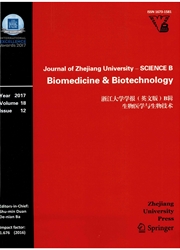

 中文摘要:
中文摘要:
新茎腐烂疾病被发现在 Fuzhou 的温室在 Arabidopsis 植物上自然地发生,中国。识别它的病原体的无异状,我们进行了从 sclerotia 的一系列真菌的隔离和纯化,植物接种,和子囊和 ascospore 正式就职。在接种以后引起典型 water-soaked 损害并且在 Arabidopsis 植物和文化媒介盘子上两个都生产了 sclerotia 的 isolate,和 sclerotia 能被导致生产 discal apothecia 和 8 双性人起核心作用 ascospores 每子囊。这些疾病症状和真菌的形态学数据表明真菌 Sclerotinia sclerotiorum (解放) de Bary 是为 Arabidopsis 的病原体茎腐烂。证实这,我们进一步由聚合酶链反应(PCR ) 放大了它的大子单元 ribosomal DNA (LSU rDNA ) ,并且在 GenBank 把顺序与已知的 LSU rDNA 序列作比较。结果证明顺序与不同 S 的 LSU rDNAs 分享最高的身份。sclerotiorum 种类。一起拿所有这些数据,我们断定引起了 Arabidopsis 茎的真菌腐烂是 S。sclerotiorum (解放) de Bary。这是 Arabidopsis 被 S 自然地感染的第一份报告。sclerotiorum。
 英文摘要:
英文摘要:
A new stem rot disease is found to occur naturally on Arabidopsis plants in greenhouses of Fuzhou, China. In order to identify its pathogen, we conducted a series of fungal isolation and purification, plant reinoculation, and ascus and ascospore induction from the sclerotia. The isolate caused typical water-soaked lesions after reinoculation and produced sclerotia both on Arabidopsis plants and culture medium plates, and the sclerotia could be induced to produce discal apothecia and 8 binucleate ascospores per ascus. These disease symptom and fungal morphology data revealed that the fungus Sclerotinia sclerotiorum (Lib.) de Bary was the pathogen for Arabidopsis stem rot. To confirm this, we further amplified its large subunit ribosomal DNA (LSU rDNA) by polymerase chain reaction (PCR), and compared the sequence with the known LSU rDNA sequences in GenBank. The results show that the sequence shares the highest identities with the LSU rDNAs of different S. sclerotiorum strains. Taking all these data together, we concluded that the fungus that caused the Arabidopsis stem rot is S. sclerotiorum (Lib.) de Bary. This is the first report that Arabidopsis is naturally infected by S. sclerotiorum.
 同期刊论文项目
同期刊论文项目
 同项目期刊论文
同项目期刊论文
 期刊信息
期刊信息
